Pronunciation:
(doh-RAH-doh)Abbreviation:
DorGenitive:
DoradusRight Ascension:
5 hoursDeclination:
-65 degreesArea in Square Degrees:
179Crosses Meridian:
9 PM, January 20Visible Between Latitudes:
15 and -90 degreesThe constellation Dorado, the dolphinfish, is located in the southern hemisphere of the sky. It is visible from all latitudes south of 20 degrees north from November through January. It is a small constellation covering an area of 179 square degrees. It ranks 72nd in size among the 88 constellations in the night sky. It is bordered by the constellations Caelum, Horologium, Hydrus, Mensa, Pictor, Reticulum, and Volans.
There is no mythology associated with Dorado. It is one of 12 constellations named by the Dutch astronomer Petrus Plancius based on observations by Dutch navigators. The name means “the dolphinfish” in Latin. It first appeared on a celestial globe published by Plancius in 1597. It was later included in Johann Bayer’s star atlas in 1603. The constellation is usually represented as a dolphinfish such as the Mahi-mahi. It is not in any way related to the marine mammal known as the dolphin. This constellation has also been represented as a goldfish and a swordfish, but the dolphinfish is the correct representation based on the name Dorado.
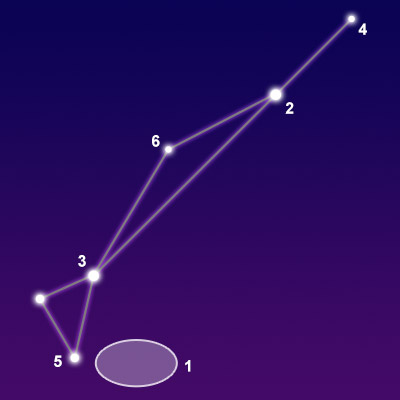
points of interest below © Sea and Sky
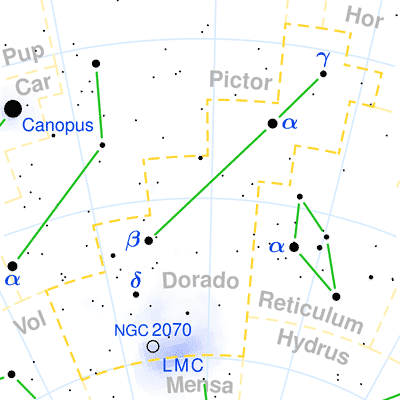
© Torsten Bronger CC BY-SA 3.0
Alpha Doradus
Beta Doradus
Gamma Doradus
Delta Doradus
Zeta Doradus
N/A
N/A
N/A
N/A
N/A
Binary Star System
Cepheid Variable Star
Variable Star
White Dwarf Star
Yellow-White Dwarf Star
3.30
3.63
4.25
4.34
4.68
Dorado is composed mainly of dim stars. The brightest star is Alpha Doradus with a visual magnitude of 3.30. It is a binary star system located approximately 169 light years from Earth. The second brightest star is Beta Doradus. It is a Cepheid variable star with an average magnitude of 3.63. This star varies in brightness from magnitude 3.45 to 4.05. It lies about 1,050 light years away. The third brightest star in Dorado is Gamma Doradus. It is also a variable star with an average magnitude of 4.25. It is a white dwarf star located 66 light years from our solar system.
Dorado contains no Messier objects but does contain one of the most famous deep-sky objects in the southern hemisphere, the Large Magellanic Cloud, or LMC. The LMC is an irregular galaxy located just outside our own Milky Way. It is the third closest galaxy to our own and is one of the few galaxies that can be seen with the naked eye. The LMC contains a few notable deep-sky objects of its own. The Tarantula Nebula is a large emission nebula that contains over 800,000 stars and protostars. It is an active region of star formation. NGC 2080, the Ghost Head Nebula, is another emission nebula located within the LMC. Like the Tarantula Nebula, it is also a region of active star formation. It gets its name from two bright patches called “the Eyes of the Ghost.” All though the LMC is bright enough to be seen with the naked eye, these deep-sky objects within it can only be seen with large telescopes. Dorado also contains a number of faint galaxies including NGC 1566, a beautiful spiral galaxy also known as the Spanish Dancer.
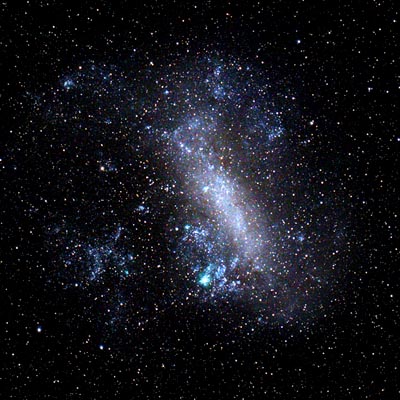
© Astro.sin / CC BY 4.0
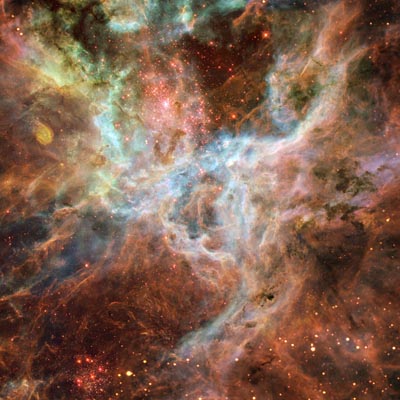
seen by the the Hubble Space Telescope
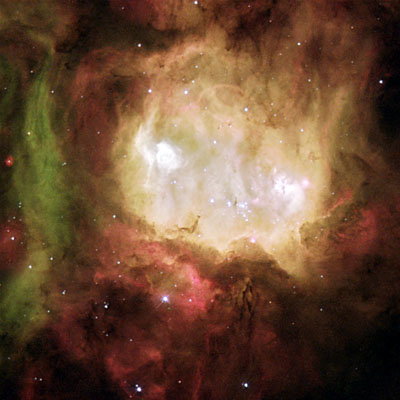
the the Hubble Space Telescope
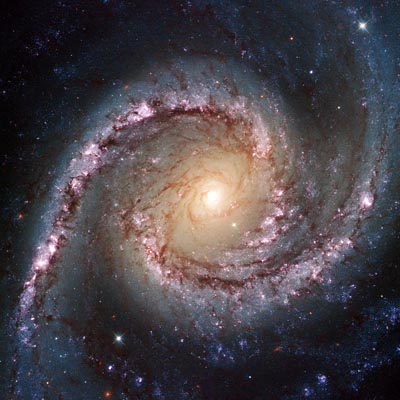
NASA Acknowledgement: Det58 / CC BY 3.0



